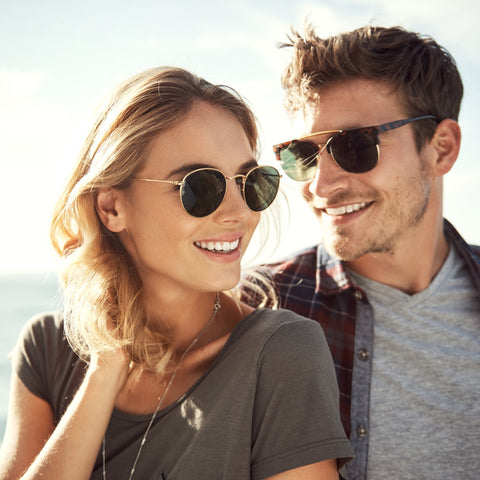Protecting your skin from the sun

Being outdoors in the summertime makes most people feel good. Plus, there are some definite health advantages to getting some sunlight, such as activating vitamin D and strengthening the immune system.
However, getting too much sun exposure can be damaging to our skin. Here’s some ways that you can protect yourself from the sun while enjoying the fresh air.
Avoid sunlight in the middle of the day
The sun's ultraviolet rays are at their strongest between 10:00 am and 4:00 pm, so try to keep out of direct sunlight during this period if you can. Observe the shadow rule: if your shadow is shorter than you, the sun’s rays are at their most intense and you should move into the shade.
Use sunscreen
Make it a daily habit to apply sunscreen 15 to 30 minutes before going outside, even if it’s cloudy. Use a broad-spectrum sunscreen that defends against both UVA and UVB radiation, is water resistant and has a SPF of 30 or higher. Apply it to all exposed areas, including your ears, face and neck, and the back of your hands.
If you spend a long time outside, make sure to reapply your sunscreen every two hours, or every hour if you are swimming or sweating.
Also, don’t forget your lips! Apply a lip balm that contains sunscreen with a SPF of at least 30.
Wear protective clothing
Clothing is one of the best ways to protect your skin when you are in the sun. The more skin your clothes cover, the better. When possible, choose long-sleeved shirts and long pants or skirts. Note that not all fabrics provide the same protection though. When choosing your outfit, keep the following in mind:
Colour: Dark colours offer better protection than lighter shades because they absorb UV rays rather than allowing them to penetrate the fabric and reach your skin.
Thickness: Closely woven cloth, like denim, offers better protection than sheer, thin or loosely woven cloth. To check a fabric’s sun safety, hold it up to the light. If you can see through it, UV rays will penetrate the fabric easily and get to your skin.
Fit: Loose‑fitting clothes are better. Tight‑fitting clothes can stretch, and as the fibres pull away from each other more UV light can pass through.
Construction: Some clothing manufacturers make sun‑protective clothing that is made from UV resistant fabric. Look for clothes that have an Ultraviolet Protection Factor (UPF) number on the label that indicates how much UVB and UVA radiation can reach your skin.
Rock sunglasses and a hat
Sunglasses and hats aren’t just fun accessories, they are also great for protecting against UV rays. The skin on your face (around the eyes especially), ears and neck is thinner than the rest of the body making it more prone to sun damage. In addition, exposure to both UVA and UVB rays can harm your eyes.
When choosing sunglasses, look for a pair that blocks 100% of UV rays. Oversized lenses and wrap‑around styles offer the best protection. Avoid metal frames as they can reflect sunlight onto the top of the cheeks.
Hats that provide a good amount of shade are the best option. With broad‑brimmed styles, look for a brim of at least 7.5 cm. Bucket hats should have a brim that slopes downwards and is at least 6 cm. Legionnaire hats that have a flap that covers the neck are also a good choice. Check that the hat is made from materials that block the light completely. If possible, choose a hat that is made with UPF fabric.
Be aware of reflective UV
UV rays can bounce off the surfaces around you, adding to your UV exposure. Coarse and soft surfaces like grass, soil or water reflect less than 10%, concrete 8%-12% and sand reflects around 15%. White house paint can reflect up to 22% of UV radiation! So, when you head outdoors this summer be aware that you may be exposed to reflected UV.




